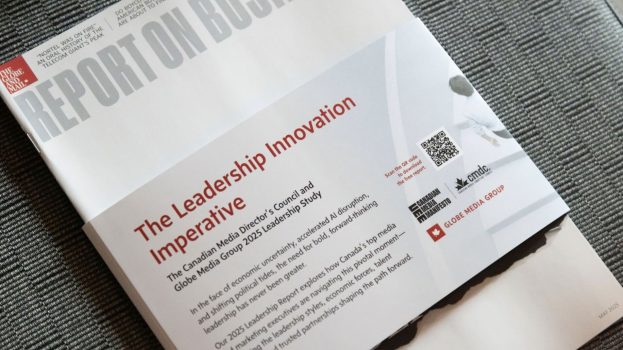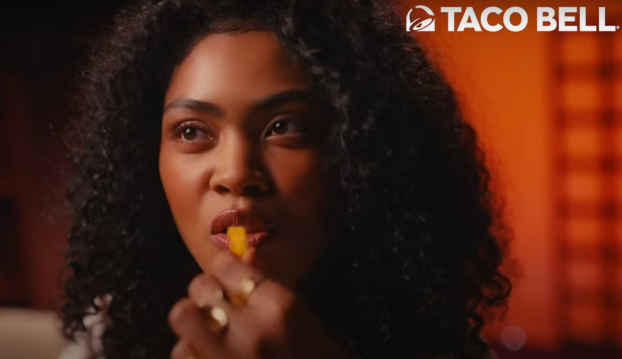You can stop calling the Internet ‘new media’ now. Other non-traditional choices, most notably SMS, have taken its place as the shiny new tools in the marketing box. In fact, the Web has literally gone mainstream. Marketers like Nike, Virgin and even BMO are increasingly choosing online as the primary or sole medium for a campaign and, in many cases, are using it in much the same way they would have deployed broadcast or print in the past.
Teaser campaigns, long the bailiwick of traditional media such as print and out of home, have found a new home online. And forget about appointment TV – we now have appointment Internet prime time.
A North American teaser campaign building up to the launch of the Air Jordan XX shoe last month combined all of these elements and more. It was a promotional contest with a gaming component that used e-mail, text messaging, and other media to drive consumers to www.jumpman23.com during prime time each day. It all built to an ultimate event – an interactive online game hosted by film director Spike Lee. And, oh yeah, there was traditional support including postcards in-store, direct mail, and
young-male-skewed music and sports TV and magazines.
Each day from mid-January to early February, consumers were given a clue behind one of the 20 symbols on the laser-etched strap of the new shoe, each icon representing a milestone in the life and career of basketball great Michael Jordan. But the key was, you had to visit the site every day at 5 p.m. to retrieve it. Those who registered for e-mail, voice mail, text messaging alerts or downloaded the computer desktop app Jumpman23 Launch Clock received additional pieces to the daily clue.
Says Michael Smit, client director at Vancouver-based digital agency Blast Radius: ‘You’d get this montage of video and still photography and copy on the Web site. It was only up for an hour, so you had to be there. The more you involved yourself in the campaign and the more clues you received, the better off you were leading up to game day.’
The tactic was extremely successful, reports Smit, with daily traffic to the site during the six weeks of the campaign up by 80% to 300% over the same time frame one year ago.
Besides creating excitement, Smit says the campaign really reinforced the whole brand identity and characteristics. ‘It let us speak to innovation and design. It was all about the icons [on the shoe strap] and the stories behind them. Those stories really represent moments of greatness – and what the brand is all about.’
Of the core registered consumers, Smit says there were 12,000 game registrants for the Primetime Air Jordan XX Tournament. Those who successfully passed the first phase of the game (matching the 20 shoes with their design elements on the soles of the shoe) to unlock the Air Jordan XX Tournament, spent anywhere from eight minutes to two hours playing the game. The winner completed the game in 8.5 minutes and, for his efforts, won a trip to Denver for the Air Jordan XX launch festivities during All-Star Weekend, as well as limited edition Jordan footwear and apparel.
To fill the gap between the end of the big contest and Feb. 19 when the shoe hit the market – as well as capitalizing on the prime-time Net concept – a series of smaller contests were run on the Web site during prime time.
Another youth marketer, Virgin Mobile Canada, heralded its entry into Canada’s telecom market this month with a teaser campaign designed to reach and appeal to teens and young adults, the primary target for its prepaid mobile services. The service is a joint venture between Virgin and Bell Canada.
Because the younger age group is harder to reach with traditional media, Virgin took it to the streets with wild postings, billboards and transit posters driving consumers to www.curethecatch.ca, a Web site for a fictional ailment caused by cellphone contracts that come with a catch.
Viewers were then taken through the four-stage Catch Self-Examination by Dr. Irvin Limbego. The diagnosis? A mild case of the Catch. By entering their e-mail address – to be notified of the cure when the new product launched – they could play a game in the lab or spread the virus and
tell a friend.
Although the Internet is the hot medium for reaching younger demos, Michael Parker, managing director of Tribal DDB in Vancouver, says the online population now clearly mirrors the overall Canadian population and is ideal for targeting older groups, and even ‘silver surfers.’
That fact is something one Tribal DDB client is banking on.
BMO Investorline launched the fourth year of its Ultimate Golf Getaway promotion last month. The two-month campaign targets a high-income, 40- to 55-year-old predominantly male audience on business and information sites including www.globeandmail.com and www.moneysense.ca.
‘The core of our customers are Web savvy and they go online for their information as well as their investing,’ says Stefania Mancini, marketing manager, advertising and communications for BMO Investorline. ‘We look at [media] we think our customers will be looking at and try to be in those places, associating ourselves with great information.’
The centrepiece of the campaign is a sophisticated interactive golf game that engages users and offers a chance to win a luxurious 10-day golf getaway for four people to either Scotland, Hawaii, or Spain. In addition to the online efforts, BMO Investorline is promoting the contest in BMO bank branches and with direct mail pieces to existing clients.
The promo is a success: In its first 11 days online this year, the game had already racked up about 400 hours of play. Similarly, last year contest entries started within two minutes of the game being posted online.
Says Mancini: ‘People were waiting for this thing to go up. So when we launched this year, we built in a teaser component using creative from last year so we could remind people of what they saw, and to tell them that this year it is going to be bigger and better.’
The game is played right in the banner ad so players don’t have to leave the information page they initially chose to view. Golfers tee off on their choice of three golf courses and if they get the ball onto the green, they have a chance to putt – a new function that Tribal DDB added to the 2005 version of the game. Clicking to enter the contest takes them to www.bmoinvestorline.com.
Jeffry Roach, director of SMG IP (Starcom MediaVest Group) in Toronto, says with the size of the online audience today, you don’t need offline to push people to the Web. He says the Internet is also being planned in the same way as other media, by researching demos to understand their overall media habits.
For some brands sometimes this means forging closer ties with content, just as it does offline. Anne McNeil, senior product manager for Visa Canada, says online has been incorporated into Visa’s strategy of content integration and bringing the brand closer to actual purchase situations.
For example, Visa has attached itself to the shopping guide segments of magazines. Online, it has hooked up with History Television, linking with travel-themed programming (www.historytravel.ca) and the travel booking process.
Visa has a presence on the home page as well as on www.historytravel.ca that users can navigate to. There they have the choice to browse specific travel themes and to choose the Visa Tours button to save on travel books.
‘[The tie-in with www.historytravel.ca] has allowed us to bundle special packages exclusive to Visa cardholders, a specific segment of people who are huge history buffs, with [discounted historical trips] they can purchase with their Visa cards,’ says McNeil.
‘It’s a whole integrated piece but really our interest was it was tied to a usage moment. You have to use your Visa card and you actually get benefits associated with that.’
Degree tests demo shift online
Want to shift your target? The Internet provides a fast and efficient means to test, tinker or tweak your ad strategy.
Peter Pinfold, brand manager of Degree Antiperspirant at Unilever Canada, worked with Tribal DDB to develop last year’s online launch campaign for an extension of the Degree line – a new fragrance called Degree Fresh Oxygen Antiperspirant.
The tactical program had a very lean budget and was being used to set the stage for the relaunch of the entire Degree brand later this month. Originally launched as a unisex brand, it will now officially be known as Degree for Women, Degree for Men.
‘It created quite a challenge when planning how to communicate [Fresh Oxygen] because of the history of being unisex,’ says Pinfold. ‘We had to be sure we didn’t blur the communications between the targets. Now we don’t have that challenge because it’s officially dual gender.’
The Internet was an efficient way to target women 18 to 34, he says, and a good way to test drive some gender-specific programs.
The strategy was to drive consumers online to www.freshoxygen.ca to experience the brand and get the chance to win a $10,000 Girlfriends’ Adventure Getaway. On the site, visitors found product information and several audio lessons on relaxation techniques. The first 20,000 visitors also received a free Fresh Oxygen sample.
To further the Fresh Oxygen theme, the online ads themselves had the appearance of breathing, inviting viewers to click to travel to the Web site. The advertisements appeared on www.Chatelaine.com and on Yahoo pages specific to women.
Offline media included P-O-P, Chatelaine and some other national women’s publications, as well as direct mail to key customers. Pinfold also took advantage of Unilever’s Home Basics e-newsletter and print publication sent out to its most valuable consumers. He says the campaign was a winner.
‘The key success factor was integrating our online and offline communications and keeping it consistent. That’s pretty much Marketing 101, but I’m surprised how often I see promotions out there that aren’t consistent from one medium to the next.’























